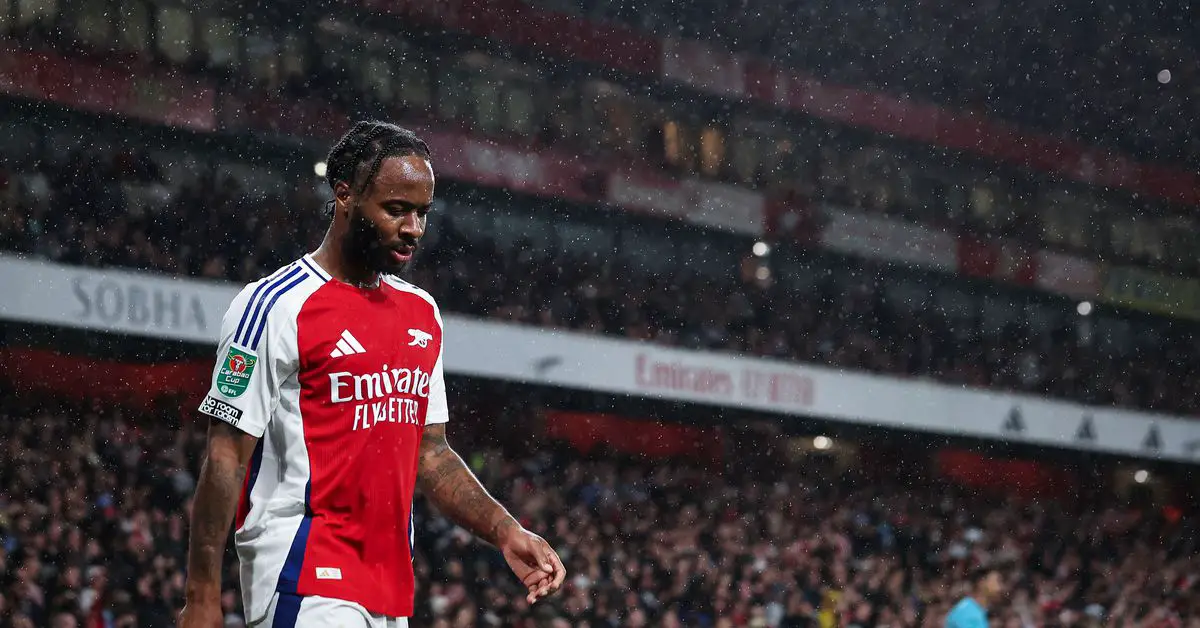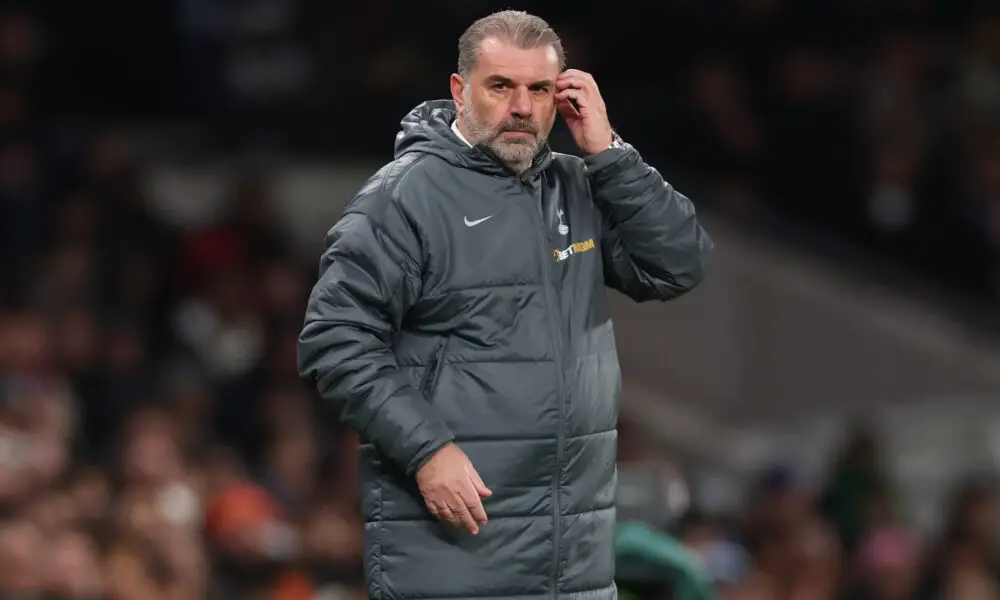The Panenka penalty is often thought of as an act of naked showboating, a needless risk taken by overly cocky players at inopportune moments.
But when the player in question is the preternaturally cool and immensely gifted Cole Palmer, suddenly it doesn’t feel quite so risky after all.
The Panenka — named after the Czech player Antonin Panenka, who used the technique to win the penalty shootout in the 1976 European Championship final against West Germany — requires a player to eschew the typical approach of aiming a penalty at the corner of the goal, to use as much power as possible, or both. Instead, they chip the ball delicately down the centre, assuming that the goalkeeper dives one way and can only helplessly watch the ball float in.
Panenka away to Spurs. It doesn’t get better than this. 😮💨#CFC | #TOTCHE pic.twitter.com/S3zdTgRNCD
— Chelsea FC (@ChelseaFC) December 8, 2024
When it works, the taker looks like an insouciant genius. When it doesn’t, they look pretty silly.
But Palmer, when he scored his second penalty in Chelsea’s 4-3 win over Tottenham, not only fell into the former category, but arguably produced the most perfect example of a Panenka imaginable.
While the Panenka is viewed as risky and flamboyant, when done correctly it’s a perfectly sensible and logical way of taking a penalty. That’s because spot kicks are all about deception, about persuading the goalkeeper you’re going to put it in one place, while actually putting it in another.
Or, as Panenka himself told Ben Lyttleton in his book about penalties ‘Twelve Yards’, “The main ingredient is to do with your own behaviour — your body language and your eyes — to ensure the goalkeeper doesn’t think that you want to kick the penalty in a different way. My run-up was always longer to gain a bit of extra time; and faster so the goalkeeper doesn’t have a chance to change direction.”
This starts with body position. In this situation, Palmer had already taken one penalty in the game, scoring low into the bottom left-hand corner while Tottenham goalkeeper Fraser Forster dived right. So there was an extra layer of psychology: whichever way he eventually struck the penalty, Palmer’s first task was to ensure that, right up until he struck the ball, he didn’t give Forster any indication of where it was going to go.
Which he partly did by adopting essentially the exact same body shape for the first penalty, as shown in this image…
…as he did for the second.

In both instances, his hips are open, pointing to his left, suggesting he would strike it in that direction. But Palmer’s skill is such that he could easily have manipulated his body to go the other way, so Forster guessed the first time he would go right, then the second time his body position was so similar the keeper thought he would aim into the same corner as for the first.
Up until that point, almost everything else about the second penalty was the same: Palmer’s demeanour before stepping up, his approach and the speed of his run-up, right up until he struck the ball.
The only thing that differed was Palmer looking towards the bottom-right corner, from his perspective, as he stepped up. The classic ‘giving the keeper the eyes’.

Palmer explained the thought process behind the second penalty afterwards. In an interview on Sky Sports, Palmer was asked when he decided he was going to try a Panenka. “When I stepped back [after placing the ball],” he said. “I looked at the clock and thought, ‘It’s a bit frantic and the game’s all over the place’. The keeper’s ready to dive, so I’ve thought, ‘If I chipped it, it would go in’. And it did.”
It’s not the first time he has taken a penalty in this style. One of his other 12 successful Premier League penalties — a record streak that is yet to be broken — came against Burnley last season: perhaps it’s significant it was his second penalty against them during the campaign (admittedly against different goalkeepers), because, again, he took the same approach; looking to the right before taking and floating it down the middle.
But, as he told Optus Sport after Sunday’s game, he doesn’t practise them. “If you overthink them then you either hit it too hard or too soft,” he said.
And getting the power just right is key, as Panenka himself explained to Lyttleton: “The shot should not be too fast, you have to chip the ball so it glides. Also you have to send the ball directly to the centre because even if it is one metre from the centre on the right or left, the penalty loses its beauty. When the ball is crossing the line, it should be already dropping. Even better if the ball reaches its peak height before the goal-line and then goes down.”
By that standard, Palmer’s was perfect. Straight down the middle, with just enough power that the ‘keeper couldn’t recover, but not too much power to ruin the aesthetics. Note the clock in the top left-hand corner of the following stills: the chip was so delicate it took about two seconds for the ball to travel the roughly 14 yards between the penalty spot…

…and the back of the net.

That works out to a shade over 14.3 miles per hour. So in a game that is so fast-paced and frantic, that penalty would not be pulled up for speeding in even London’s most draconian traffic zones. Given that the top male sprinters in the world can get up to about 27mph, it’s not implausible to think that one of Chelsea’s quicker players, with a decent run-up, could have caught up with the ball before it went in.
It was so slow that Forster had time to dive…

… give up…

… get up…

… and turn a full 180 degrees in time to watch the ball hit the back of the net.

It’s so slow that you do wonder whether he had time to, well, try and save it. But it’s probably harsh to criticise him too much for that: once you realise you’ve been made to look a fool, it’s a perfectly understandable instinct not to risk making yourself look even worse by desperately scrambling around on the floor, like a tortoise that has been flipped onto its shell. Or like Joe Hart when Andrea Pirlo Panenka-ed him at Euro 2012.
Still, from this shot (side note: what on earth is James Maddison doing?), in which Palmer is hidden by Benoit Badiashile, you can pinpoint pretty much the exact point at which Forster’s heart breaks in two.

From studying some of the shots included above, it looks like Forster realised he had been well and truly done before the ball had even crossed into the six-yard box. A rough estimate would be about seven or eight yards from goal, a realisation that must be simultaneously very fast but also make the next second or so go very, very slowly indeed.
Please also enjoy this shot, from a camera at the side of the pitch, which shows Forster looking in the opposite direction as the ball floats into his goal behind him.

There is a school of thought that says the Panenka is needlessly humiliating for a goalkeeper. That seems like a particularly joyless way of looking at things because, when done correctly, it is just like any other piece of deception in football, a more extreme version of jinking right before going left. And when it’s done correctly, it is a beautiful piece of footballing art, the sort of showing off we can all get behind.
Or, as Palmer more pithily put it to Optus Sport: “Who doesn’t like a Panenka?”
(Top photo: Shaun Botterill/Getty Images)




